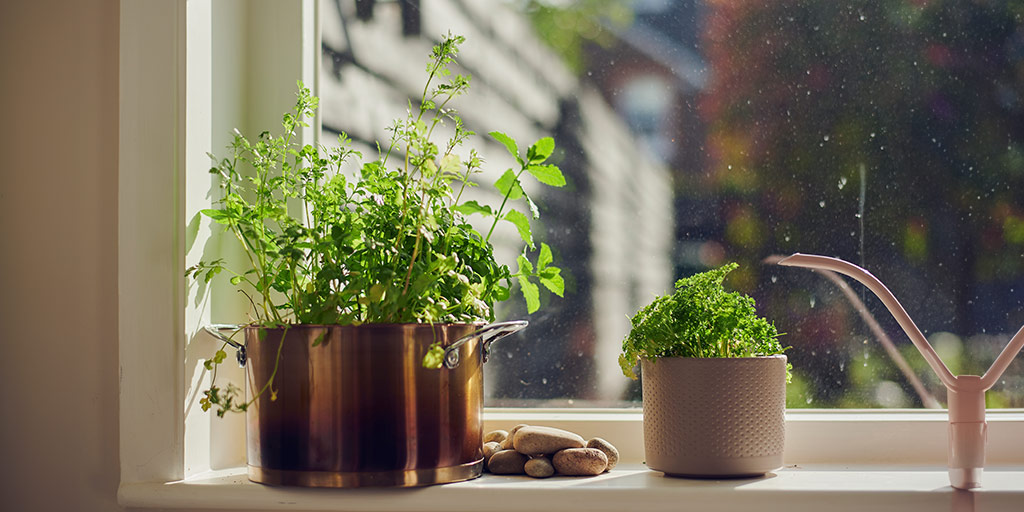Herb gardening has become a popular and rewarding way to save money while enjoying fresh ingredients at home, with even a small investment, like a seed packet of cilantro or parsley, offering weeks of fresh herbs for cooking. Growing herbs indoors not only provides a steady supply for enhancing recipes and salads but also serves as a space-efficient way to brighten up a room and add a fresh fragrance, making it perfect for apartments and small homes. With a bit of planning, it’s easy to cultivate favorites like basil, oregano, thyme, and rosemary in containers or small pots, creating a thriving indoor herb garden.
How to Grow Herbs Indoors
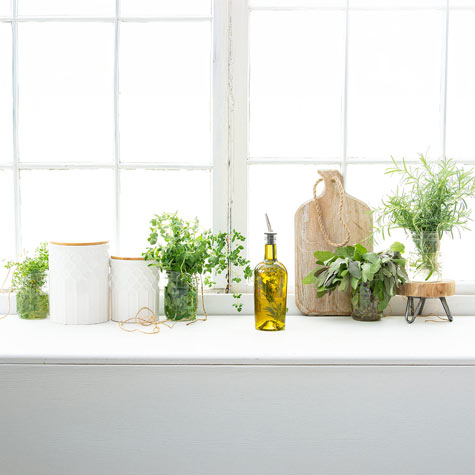
When growing herbs indoors, you can either start with plants or grow herbs from seeds. In either case, a container with drainage holes and a saucer or tray to place under the pots is necessary. This setup helps protect windowsills or other surfaces from water stains or damage.
If purchasing plants, ensure they are free of insect pests before bringing them indoors. Transplant them into your own containers using good-quality potting soil.
If starting herbs from seeds, you’ll need seeds, a quality potting mix, and containers. Grow lights are often recommended, and a seed-starting kit can be a convenient option.
Which Herbs Grow Well Indoors?
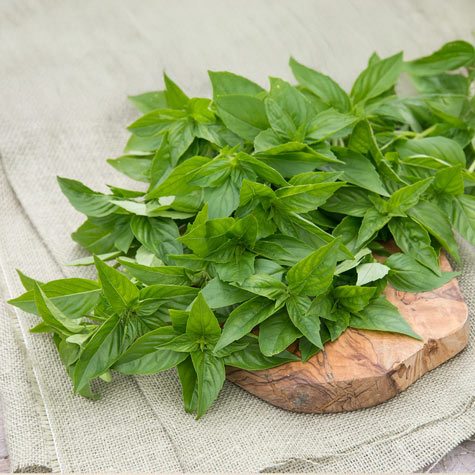
Basil is one of the most popular herbs for growing indoors. It’s easy to start from seed, looks and smells great, and is generally easy to grow. Other herbs that are well-suited to indoor growing include oregano, parsley, thyme, rosemary, sage, mint, and cilantro.
Where to Start Your Indoor Herb Garden
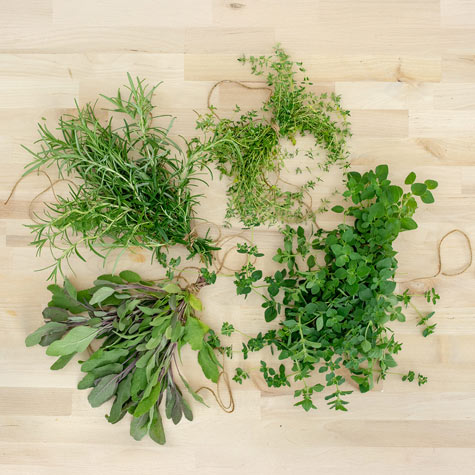
Most herbs require 6 or more hours of direct sunlight daily. South-facing windows are ideal for most herbs. However, herbs such as mint, parsley, and cilantro need slightly less light and can thrive near east or west-facing windows. If sufficient sunlight is unavailable, especially during the winter months, a grow light is a great alternative.
When to Plant Herbs Indoors
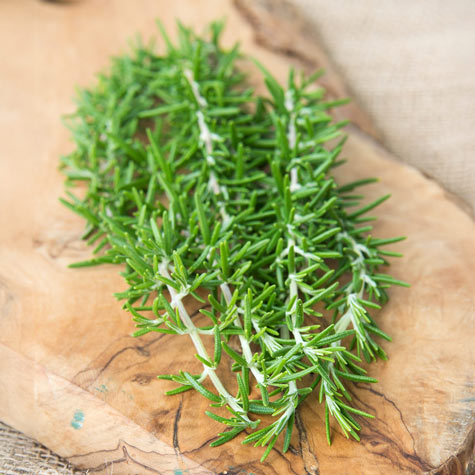
Many people choose to move herbs outdoors during the summer and bring them back indoors as the weather cools. Starting herbs indoors in winter can be more challenging without a grow light, as seeds and plants often don’t receive enough natural sunlight indoors during this season. To ensure a fresh supply of herbs throughout the winter, consider starting seeds in early fall.
Indoor Herb Garden Care

Room Temperature
Herbs grow best at temperatures between 65-70 degrees Fahrenheit. Keep in mind that temperatures near a window can fluctuate, often being cooler on winter nights and hotter on summer days than the temperature near the center of the room.
How to Water Indoor Herbs
Overwatering is the most common problem when caring for indoor herbs. Rosemary, thyme, oregano, and sage prefer drier conditions, so consider planting them in terra cotta pots, which absorb water. Herbs such as mint, basil, and parsley prefer moist, but not waterlogged, soil. If plants are wilting or turning yellow, they may be receiving too much water.
How to Harvest Indoor Herbs
When harvesting indoor herbs, avoid cutting more than one-third of the plant at a time. Either pinch off the leaves or use kitchen shears to harvest. Regular harvesting encourages new growth, but taking too much foliage at once can stress the plant.
Transplanting
If your herb plants are thriving, they may need to be repotted into a larger container or moved outdoors. Roots growing out of the drainage holes indicate that the plant requires a bigger pot. Choose a larger container with drainage holes and use quality potting mix for repotting.
For those who wish to move herb plants outdoors, wait until all danger of spring frost has passed. Gradually acclimate the plant to outdoor conditions by keeping it on a sheltered porch for several days or providing some protection in the garden.

